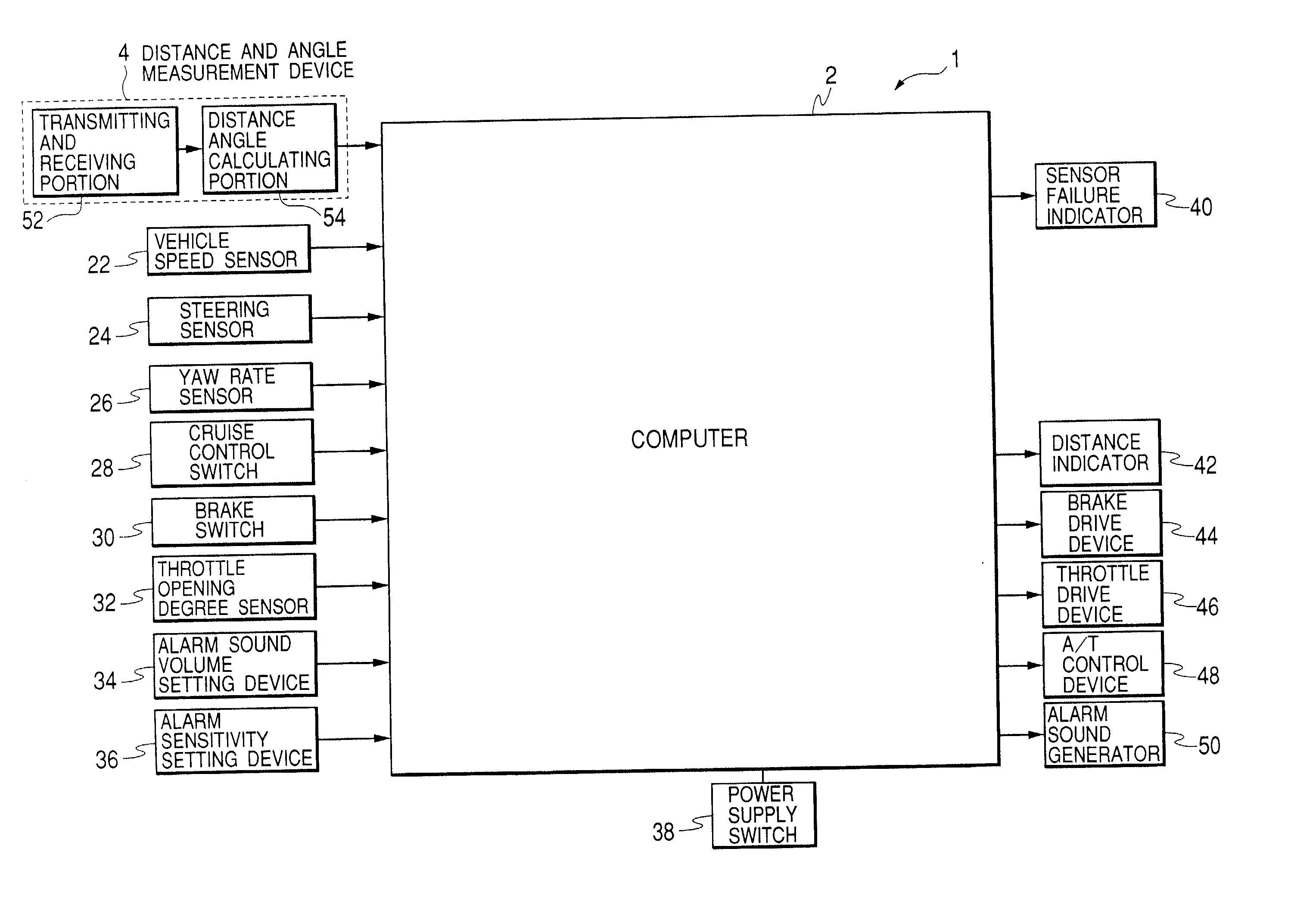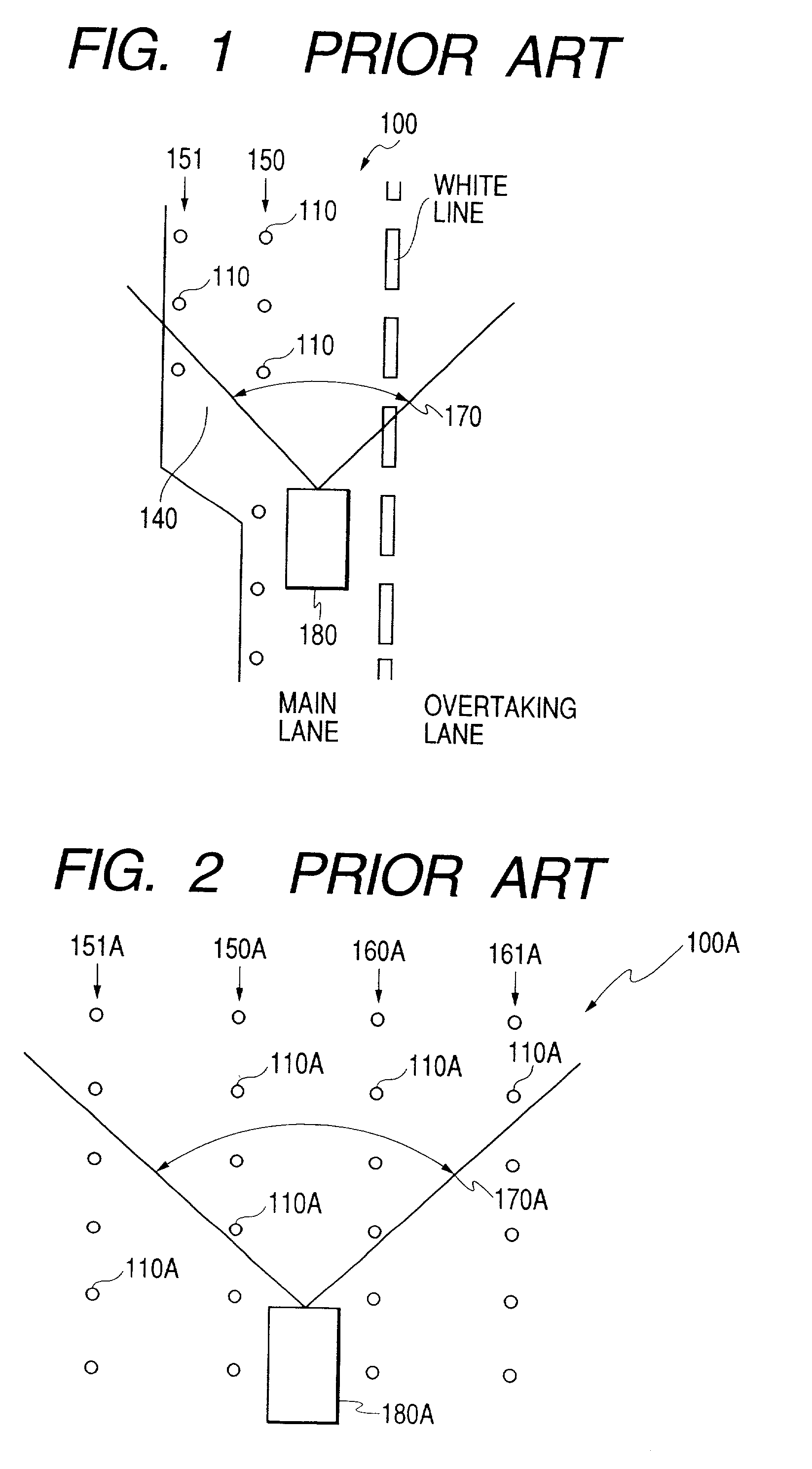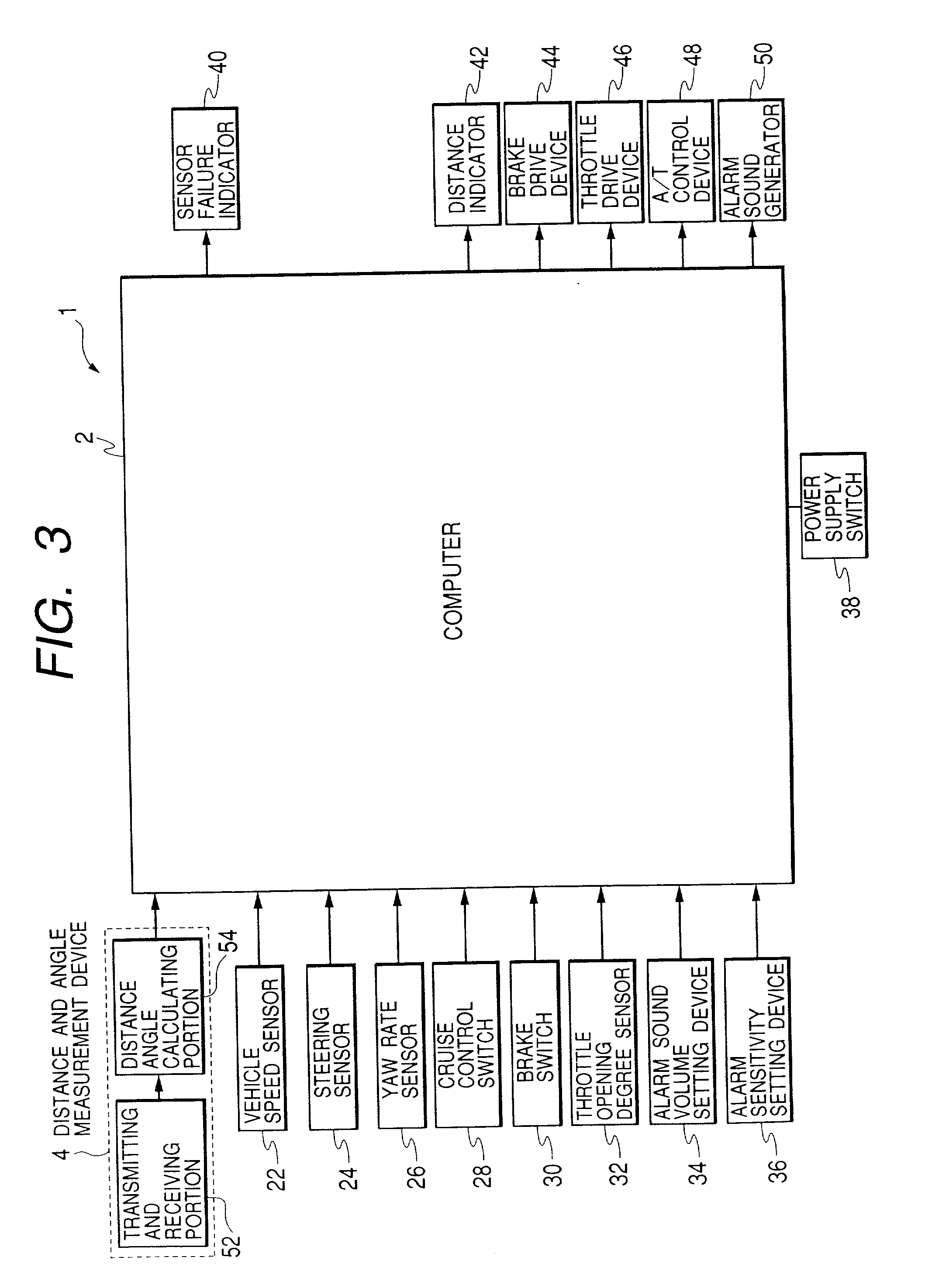Road-shape recognition system
a recognition system and road shape technology, applied in the direction of using reradiation, pedestrian/occupant safety arrangement, instruments, etc., can solve the problem of erroneously detecting road edges, and difficult for the prior-art apparatus to accurately detect the left-hand and right-hand road edges
- Summary
- Abstract
- Description
- Claims
- Application Information
AI Technical Summary
Problems solved by technology
Method used
Image
Examples
first embodiment
[0102] A second embodiment of this invention is similar to the first embodiment thereof except that a road-shape recognition block S400A replaces the road-shape recognition block S400 in FIGS. 5 and 6. The road-shape recognition block S400A corresponds to a road-shape recognition routine.
[0103] As shown in FIG. 10, the road-shape recognition block (the road-shape recognition routine) S400A has a sequence of steps S420, S421, S422, S423, S424, and S425.
[0104] The step S420 follows the step S300 in FIG. 5. The step S420 selects probable delineators from among detected objects as the step S410 in FIG. 6 does.
[0105] The step S421 is subsequent to the step S420. The step S421 calculates predicted transverse positions Xcross of the probable delineators given by the step S420 as the step S414 in FIG. 6 does. The step S421 separates the predicted transverse positions Xcross into groups each having ones close to each other. The step S421 determines typical predicted transverse positions TXcr...
third embodiment
[0113] A third embodiment of this invention is similar to the first embodiment thereof except that a road-shape recognition block S400B replaces the road-shape recognition block S400 in FIGS. 5 and 6. The road-shape recognition block S400B corresponds to a road-shape recognition routine.
[0114] As shown in FIG. 11, the road-shape recognition block (the road-shape recognition routine) S400B has a sequence of steps S430, S432, S434, S436, S438, S440, and S442.
[0115] The step S430 follows the step S300 in FIG. 5. The step S430 selects probable delineators from among detected objects as the step S410 in FIG. 6 does.
[0116] The step S432 is subsequent to the step S430. The step S432 calculates predicted transverse positions Xcross of the probable delineators given by the step S430 as the step S414 in FIG. 6 does. The step S432 separates the predicted transverse positions Xcross into groups each having ones close to each other. The step S432 determines typical predicted transverse positions...
fourth embodiment
[0124] A fourth embodiment of this invention is similar to the first embodiment thereof except that a road-shape recognition block S400C replaces the road-shape recognition block S400 in FIGS. 5 and 6. The road-shape recognition block S400C corresponds to a road-shape recognition routine.
[0125] As shown in FIG. 12, the road-shape recognition block (the road-shape recognition routine) S400C has a sequence of steps S450, S452, S454, S456, and S458.
[0126] The step S450 follows the step S300 in FIG. 5. The step S450 selects probable delineators from among detected objects as the step S410 in FIG. 6 does.
[0127] The step S452 is subsequent to the step S450. The step S452 calculates predicted transverse positions Xcross of the probable delineators given by the step S450 as the step S414 in FIG. 6 does.
[0128] The step S454 follows the step S452. Among probable delineators in the left-hand side of the road, the step S454 removes one or ones each corresponding a predicted transverse position ...
PUM
 Login to View More
Login to View More Abstract
Description
Claims
Application Information
 Login to View More
Login to View More - R&D
- Intellectual Property
- Life Sciences
- Materials
- Tech Scout
- Unparalleled Data Quality
- Higher Quality Content
- 60% Fewer Hallucinations
Browse by: Latest US Patents, China's latest patents, Technical Efficacy Thesaurus, Application Domain, Technology Topic, Popular Technical Reports.
© 2025 PatSnap. All rights reserved.Legal|Privacy policy|Modern Slavery Act Transparency Statement|Sitemap|About US| Contact US: help@patsnap.com



